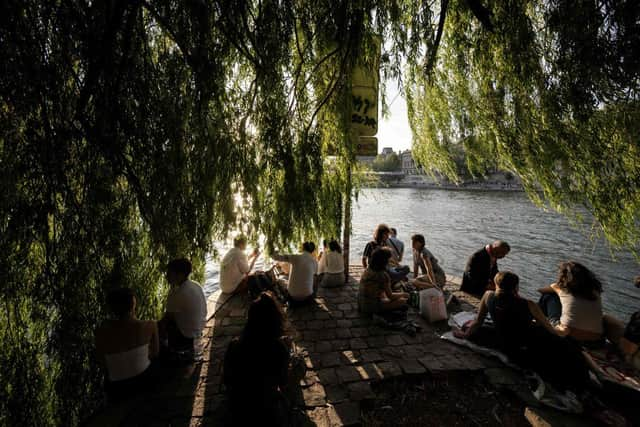France: Why have Parisians not been able to swim in the River Seine for 100 years - until now?
It is an iconic waterway that flows through the heart of one of Europe’s best-loved capital cities.
But for the past century, the river Seine in Paris has been too polluted for swimmers and divers to use without becoming ill. Now the city has invested more than €1.4 billion (£1.2bn) into a clean-up that means the river will be safe to use for the first time since city authorities banned the public from swimming in 1923.
Advertisement
Hide AdAdvertisement
Hide AdAn annual Christmas cross-river competition continued, however, until World War Two, while swimming has been permitted in the north of the city on the Canal de l'Ourcq since 2017.


The clean-up has taken place ahead of the 2024 Olympic Games, which is to be held in Paris.
It will play host to three Olympic events – triathlon, marathon swimming and paratriathlon – while three open-air swimming areas are to open to the public by 2025. The bathing areas – one of which will be located at the foot of the Eiffel Tower – will also see changing rooms and showers created on the quays.
The river will also play a key part in the Olympics opening ceremony, when a flotilla of 160 boats carries 10,000 athletes down a 3.7-mile stretch to the Eiffel Tower.
“When people see athletes swimming in the Seine with no health problems, they'll be confident themselves to start going back in the Seine,” said Pierre Rabadan, the city's deputy mayor, who is also overseeing the Paris Olympics. “It's our contribution for the future.”
The Seine has seen high levels of pollution, e.coli and bacteria for many years. Industrial waste was tipped into the river 100 years ago, while a “single system” drainage network meant waste water from household sinks and toilets overflowed into the Seine when heavy rains fell. A huge rainwater storage basin – large enough to hold water from 20 Olympic swimming pools – is being constructed as part of the improvements.
As part of the clean-up, 23,000 homes and 260 houseboats which previously discharged waste into the river were connected to the sewerage system. However, last year, 1.9 million cubic metres of untreated wastewater was released into the Seine.
The pollution has taken its toll on the river’s wildlife. In the 1960s only three species of fish were recorded in the city, while recently, experts say between 30 and 35 species are now living in the river.
Advertisement
Hide AdAdvertisement
Hide AdAnglers who use the river, however, say while the water is clean, they get annual vaccinations against leptospirosis, which is caused by rats. Paris, like many urban places, has a problem with large numbers of the vermin.
Paul Kennouche, head of water quality at Paris city hall, said studies showed the amount of leptospirosis bacteria was not unusually high.
“We have not had a single case of leptospirosis in the canal at La Villette (where swimming is already allowed), and that is the same urban environment,” he said. “We do not have any huge concern, but we will certainly be monitoring and taking action to remove rats.”
Comments
Want to join the conversation? Please or to comment on this article.
